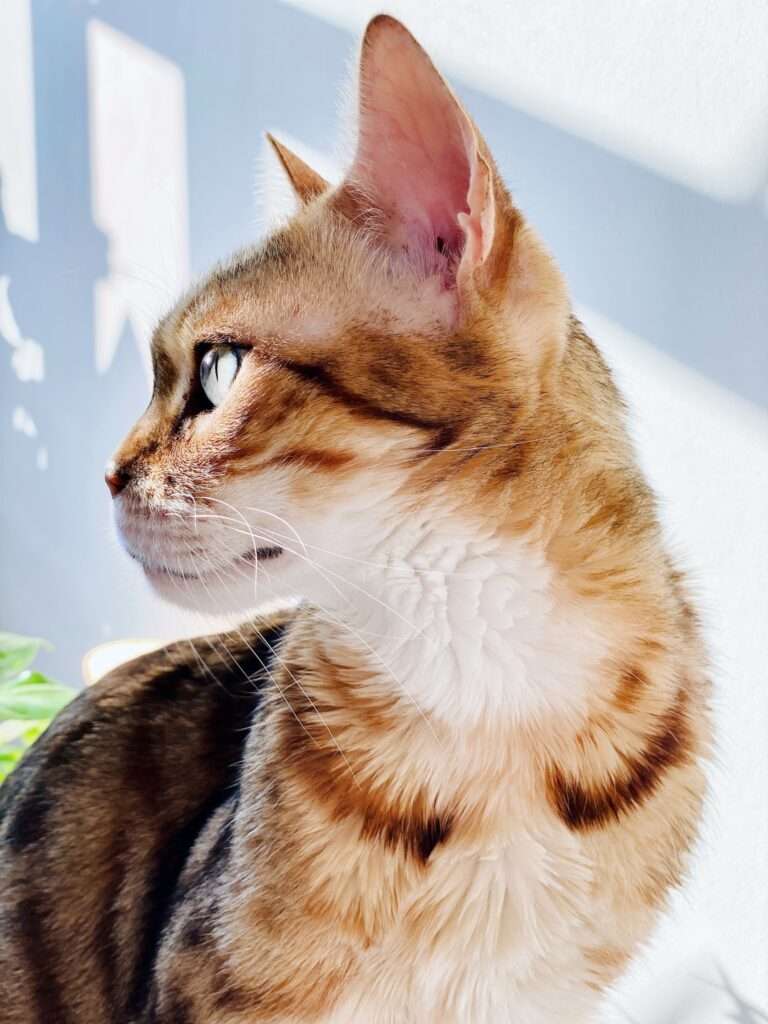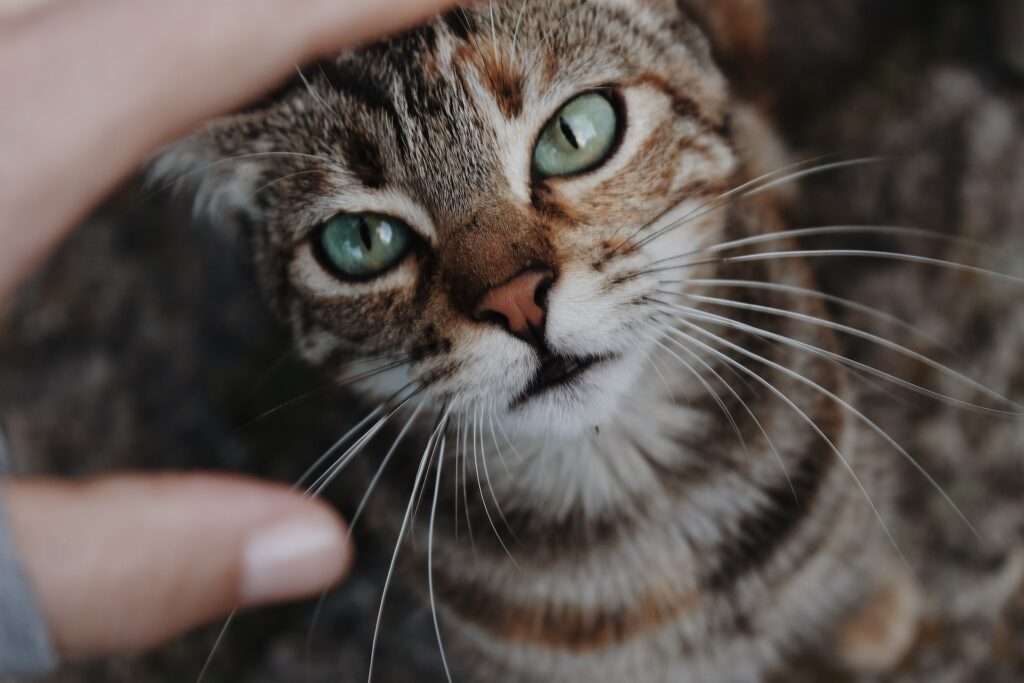Do Cat Whiskers Grow Back? Here’s What You Need to Know
As cat lovers, we all know that cats are unique creatures that are full of surprises. One of the most fascinating aspects of a cat’s anatomy is their whiskers. These long, sensitive hairs that protrude from a cat’s face are not just there for decoration. They are essential tools that help cats navigate their environment, communicate, and sense potential danger.
As such, it’s essential to understand the importance of cat whiskers and whether they can grow back if they are lost. In this article, we will explore the topic of “do cat whiskers grow back” in-depth, to provide you with a comprehensive understanding of this fascinating aspect of feline biology.
The Anatomy of Cat Whiskers
Before we dive into the topic of whisker regrowth, let’s first understand what cat whiskers are and why they are so crucial to a cat’s daily life. Also known as vibrissae, cat whiskers are specialized hairs that are embedded in a cat’s face.
Unlike other types of hair, whiskers are thicker, stiffer, and more deeply rooted in a cat’s skin, which makes them much more sensitive to touch and vibrations. In fact, cat whiskers are so sensitive that they can detect even the slightest changes in air currents, which helps cats navigate their surroundings, hunt prey, and avoid potential danger.
In addition to their sensitivity, cat whiskers also have a unique structure that allows them to communicate with the cat’s nervous system. Each whisker is surrounded by a complex network of nerves and blood vessels that transmit information to the cat’s brain. This means that even if a cat can’t see or hear something, they can still sense it through their whiskers.
Overall, cat whiskers are an incredible adaptation that has allowed cats to survive and thrive in a wide range of environments. Having learned about the anatomy of cat whiskers, we can now examine important questions about them, such as whether they can be cut, why they fall out, and if they can regrow.
Can You Cut Cat Whiskers?
While cat whiskers are an important part of a cat’s sensory system, some people may consider trimming or cutting them for aesthetic reasons. However, it’s important to understand that cutting a cat’s whiskers can have serious consequences for their well-being.
When whiskers are cut, they don’t just grow back like regular fur. In fact, a cat’s whiskers are actually connected to the nervous system, which means that cutting them can cause pain and discomfort. Additionally, cutting a cat’s whiskers can disrupt their ability to navigate their environment and communicate with other cats, which can cause anxiety and stress.
In some cases, a cat’s whiskers may be accidentally cut or damaged, such as when they get caught in something or are injured in a fight. If this happens, it’s important to keep a close eye on your cat to ensure that their whiskers are regrowing properly.
In most cases, cat whiskers will grow back on their own over time, but it’s important to take steps to promote regrowth and ensure that your cat is comfortable in the meantime.
Why Do Cat Whiskers Fall Out?
As with any type of hair, cat whiskers can fall out naturally as part of the cat’s normal shedding process. However, unlike other types of hair, cat whiskers typically do not grow back as quickly or easily. In addition to natural shedding, cat whiskers can also fall out due to aging, trauma or injury, and medical conditions.
As cats age, their whiskers may become weaker and more brittle, which can cause them to break or fall out more easily. Trauma or injury to the face, such as getting caught in a tight space or being hit by a car, can also cause cat whiskers to fall out. Finally, certain medical conditions, such as feline acne or skin infections, can cause cat whiskers to fall out as well.
Do Cat Whiskers Grow Back?

If your cat loses a whisker, you may be wondering if it will grow back. The short answer is yes, cat whiskers can grow back, but it may take some time. The length of time it takes for cat whiskers to grow back can vary depending on several factors, including the cat’s age, overall health, and the reason why the whisker fell out in the first place.
Typically, it takes around two to three months for cat whiskers to grow back fully. However, this timeline can vary depending on the individual cat. During the regrowth process, you may notice that the new whisker is thinner and more fragile than the original whisker. This is normal and is a result of the new whisker still growing and strengthening.
In addition to time, proper nutrition is also essential for whisker regrowth. Make sure your cat is getting a balanced and nutritious diet that includes plenty of protein, vitamins, and minerals. You may also want to consider supplements that are specifically designed to support healthy hair growth.
Overall, while it may take some time and patience, cat whiskers can grow back after falling out. However, if you notice that your cat’s whiskers are not growing back, or if you notice any other changes in your cat’s whiskers, it’s essential to consult with your veterinarian to rule out any underlying medical conditions.
How to Care for a Cat with Broken Whiskers
If your cat has broken whiskers, it’s essential to take steps to prevent further damage and help facilitate regrowth. Here are a few tips for caring for a cat with broken whiskers:
- Keep your cat’s environment safe and free from potential hazards that could cause further whisker damage.
- Make sure your cat is getting proper nutrition to support healthy hair growth.
- Avoid handling your cat’s whiskers, as this can cause further damage.
- If your cat’s whiskers are broken due to a medical condition, such as feline acne or skin infection, consult with your veterinarian to develop a treatment plan.
- Be patient as it may take several months for your cat’s whiskers to fully regrow.
What Happens If a Cat’s Whiskers Don’t Grow Back?
While cat whiskers typically do grow back, there are some cases where a cat’s whiskers may not regrow properly. If a cat’s whiskers have been repeatedly cut or damaged, the hair follicles may become permanently damaged, which can result in stunted or incomplete regrowth.
If a cat’s whiskers are not growing back, it can have a number of consequences for their overall health and well-being. Without their whiskers, cats may have difficulty navigating their environment and may become anxious or stressed. They may also have difficulty communicating with other cats and may be more prone to accidents and injuries.
If you’re concerned that your cat’s whiskers are not growing back properly, it’s important to consult with your veterinarian. Your vet can examine your cat and determine whether there is an underlying health issue that is preventing proper regrowth.
How to Help Your Cat’s Whiskers Regrow

If your cat’s whiskers have been cut or damaged, there are a few things you can do to help promote healthy regrowth. Here are some tips to help your cat’s whiskers regrow:
- Provide a healthy diet: A balanced diet rich in vitamins and minerals can help promote healthy hair growth, including whiskers.
- Minimize stress: Cats can become stressed if their environment is noisy, chaotic, or uncomfortable. Minimizing stress in your cat’s environment can help promote healthy regrowth.
- Avoid cutting your cat’s whiskers: While it may be tempting to trim your cat’s whiskers for aesthetic reasons, it’s important to resist the urge. Cutting or trimming your cat’s whiskers can cause pain and discomfort, and can disrupt their ability to navigate and communicate.
- Monitor regrowth: Keep an eye on your cat’s whiskers as they regrow. If you notice any abnormalities or signs of discomfort, consult with your veterinarian.
By taking these steps, you can help ensure that your cat’s whiskers regrow properly and that they are able to navigate and communicate with ease. If you’re concerned about your cat’s whiskers, don’t hesitate to consult with your veterinarian for guidance and support.
Cat Whisker-related Medical Concerns
While cat whiskers can fall out naturally and regrow on their own, there are also several medical conditions that can affect cat whiskers. Here are a few cat whisker-related medical concerns to be aware of:
- Feline Acne – This condition can cause small bumps to form on a cat’s chin, which can lead to whisker loss and other skin issues.
- Skin Infections – Skin infections can cause hair loss and whisker loss in cats.
- Allergies – Allergies can cause itching and skin irritation, which can lead to whisker loss.
- Mites – Certain types of mites can cause hair loss and whisker loss in cats.
If you notice that your cat’s whiskers are falling out in large numbers or if you notice any other changes in your cat’s skin or coat, it’s important to consult with your veterinarian to determine the underlying cause and develop an appropriate treatment plan.
Conclusion
In conclusion, cat whiskers are a fascinating and essential part of a cat’s anatomy. They help cats navigate their environment, detect potential danger, and communicate with other cats. While it’s normal for cat whiskers to fall out naturally, they can also fall out due to aging, trauma, or medical conditions.
Fortunately, cat whiskers can grow back with time and proper care. If your cat loses a whisker or if you notice any changes in your cat’s whiskers, it’s important to take steps to promote regrowth and consult with your veterinarian if necessary.
Remember to always provide your cat with a safe and stimulating environment that allows them to use their whiskers to their full potential. With proper care and attention, your cat’s whiskers will continue to help them explore their world and thrive in their environment.
Frequently Asked Questions
Can cat whiskers be cut or trimmed?
Cat whiskers should never be cut or trimmed on purpose. Whiskers are essential sensory tools for cats, and cutting them can cause discomfort and disorientation.
Do cats whiskers grow back if cut?
If a cat’s whiskers are accidentally cut, they will grow back. Whiskers shed and regrow a lot like human hair, so your cat should be just fine. However, cutting a cat’s whiskers can cause temporary inconvenience and disorientation.
How long does it take for cat whiskers to grow back?
It typically takes about two months for cat whiskers to grow back fully. However, this can vary depending on the cat’s age, health, and other factors.
Are cat whiskers important?
Yes, cat whiskers are important sensory tools that help cats navigate their environment. Whiskers are highly sensitive and can detect changes in air pressure, which helps cats determine the location, size, and shape of nearby objects.
What should I do if I accidentally cut my cat’s whiskers?
If you accidentally cut your cat’s whiskers, don’t worry. Your cat’s whiskers will grow back. However, you should monitor your cat for signs of discomfort or disorientation, and consult with a veterinarian if you have any concerns.
Do all cats have whiskers?
Yes, all cats have whiskers. In fact, all mammals have whiskers in some form or another. Whiskers are also called vibrissae, and they are specialized hairs that are thicker and longer than regular hairs.
Can cat whiskers change color?
Yes, cat whiskers can change color as a cat ages. Just like human hair, cat whiskers can turn gray or white as a cat gets older. However, whiskers can also change color due to illness, stress, or other factors, so it’s important to monitor your cat’s health and behavior.
Do different cat breeds have different types of whiskers?
No, all cat breeds have the same type of whiskers. However, some breeds may have longer or thicker whiskers than others. For example, breeds like the Maine Coon and the Norwegian Forest Cat are known for their long, luxurious whiskers.
What is the purpose of cat whiskers?
Cat whiskers serve several important purposes. They help cats navigate their environment by detecting changes in air pressure, which helps them avoid obstacles and hunt prey. Whiskers also provide tactile information, which helps cats communicate with each other and with their environment.
Can cats feel pain in their whiskers?
Yes, cats can feel pain in their whiskers. Whiskers are highly sensitive, and cutting or trimming them can cause discomfort and disorientation. If you accidentally cut your cat’s whiskers, monitor them closely for signs of pain or distress and consult with a veterinarian if necessary.





